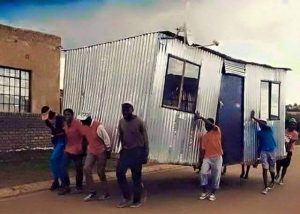Early on Saturday morning, a power transmission cable snapped somewhere near Nairobi city. The resulting effect was a nationwide blackout in Kenya and Uganda. How did one cable send two countries into darkness?
It is something complicated if you do not understand the power distribution, but we can make it simple for you via an analogy.
Analogy
Let’s assume that on average, one person can lift 40 kg of weight. Some can do 70 while other only can manage 10kg, but the average always comes to 40 kg.
You need to move your house from one point of your farm to another, and you need to hire some people to do it. You estimate that the house weighs 1000kg, and this translates to 25 people if each of them is to carry 40kg. Remember you are moving the whole house as one unit (it happens).

When it is time to move the house, everything goes on as planned. At one point one man stumbles and the standby guy moves in quickly. Everything is going on according to the plan.
At another point one guy hurts his leg and you are left with 26 people doing the lifting. This is still safe since you only need 25 people for the work.
But then, something unusual happens. One man who is very strong slips. He was carrying about 70 kg of the weight, and when he stops doing the work, every person around him feels the extra burden. To rescue him, his neighbor stops lifting and helps him move out of the way before he is ran over. The others near him stop moving and try to get everybody else to stop moving so that there is no accident. In the confusion that follows, there is an imbalance and the only safe thing to do is to put the house down so that everyone can recollect themselves.
This stops the whole operation for 10 minutes as everyone realigns themselves and work resumes.
How can such a scenario be prevented? Majorly by having more people so that there can be more tolerance to imbalances. However, this increases the cost and it will not help you when all the people holding one side encounter a unexpected obstacle. They will still have to put the house down.
The other option is to divide the house into equal pieces and let every person carry a 40 kg piece. This is would work, but remember some people can only lift 10 kg while others 70 kg. You will spend a lot of time either cutting unequal pieces and marching them to each person’s capacity, or alternatively you might need to pair up the people with less capacity, thus increasing the number of people you need.
What Happened
The electricity distribution system is called a grid, and involves several electricity generators being connected together into one network so as to serve people all over the country. In Kenya, we have different sources of electricity such as hydroelectric power plants, geothermal, wind, solar and other sources of power, including imports from Uganda.
This interconnection helps keep the load stable even if one source of power fails. It also helps maintain optimum supply such that if demand is low, some sources such as the expensive thermal (diesel) powered plants can be switched off.